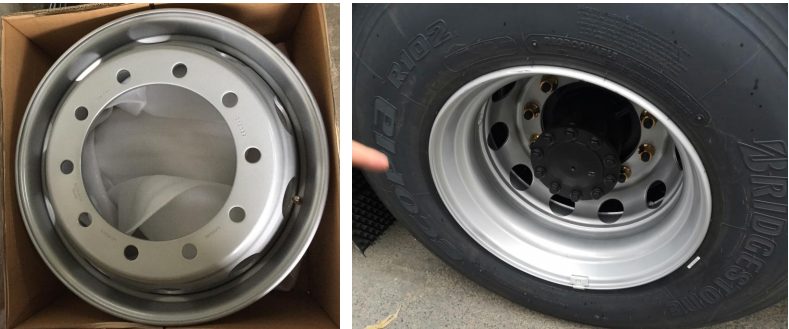Can i change one tire only?
Whether you can change only one tire depends on various factors such as the type of vehicle, the condition of the tires, and driving habits. Here is a detailed analysis:
1. Factors to Consider When Changing a Single Tire
- Tire Type and Vehicle Drivetrain
- Two-Wheel Drive (2WD) Vehicles:
- If you have a 2WD vehicle (front-wheel drive or rear-wheel drive), changing only one tire is generally feasible in an emergency, but it is recommended to replace tires in pairs for better performance.
- For example, in a front-wheel drive car, if only one front tire is severely worn or damaged, replacing only that tire can be done temporarily. However, if the other front tire has significant wear, replacing both front tires is better to ensure balanced traction and handling.
- Four-Wheel Drive (4WD) or All-Wheel Drive (AWD) Vehicles:
- In 4WD or AWD vehicles, the tires need to have consistent tread depth and performance to ensure even power distribution to all wheels. Changing only one tire is not recommended, as it can cause differences in tire circumference, leading to excessive wear on the transmission, differential, and other components, and may even affect vehicle stability and driving safety.
- For example, in some AWD systems, if the tread depth difference between tires exceeds a certain limit (such as 2/32 of an inch), it can cause the system to malfunction.
- Tire Condition and Wear
- If the other tires have sufficient tread depth (usually above 2/32 of an inch) and no significant damage or wear issues, changing only one tire may be acceptable in an emergency.
- However, if the other tires are also worn close to the wear limit (the tread wear indicator is exposed), it is advisable to replace multiple tires or all tires at the same time to ensure uniform performance and safety.
- Driving Habits and Road Conditions
- If you often drive on complex road conditions (such as wet, snowy, or icy roads), having tires with consistent performance is more important. In this case, replacing tires in pairs or all at once is more conducive to maintaining vehicle control and braking performance.
- Frequent high-speed driving also requires tires to have consistent grip and stability, so single tire replacement should be avoided as much as possible.
2. Potential Risks of Changing a Single Tire
- Handling and Stability Issues:
- Tires with different tread depths or brands may have different grip and braking properties, which can affect the vehicle's steering response, cornering stability, and emergency braking performance.
- For example, if one front tire has a new tread and the other has significant wear, the vehicle may pull to one side during braking, increasing the risk of an accident.
- Uneven Wear of Other Tires:
- When only one tire is replaced, the new tire may have different rolling resistance and traction from the old tires, causing the vehicle's suspension and drivetrain to adjust unevenly, which may lead to accelerated wear of the other old tires.
- Impact on Vehicle Systems:
- In some vehicles, especially those with advanced driving assistance systems (such as ESP or traction control), inconsistent tire performance may cause the system to misjudge the vehicle's driving status, resulting in incorrect system interventions or warning lights.
3. Recommendations for Replacing Tires
- Emergency Situations:
- If you need to replace only one tire due to a temporary emergency (such as a puncture that cannot be repaired), it is recommended to choose a tire with the same brand, model, and tread pattern as the original tire, and try to install it on the same axle (such as the front or rear axle) to minimize the impact on vehicle performance.
- After replacing a single tire, pay attention to observing the vehicle's driving condition and try to replace the other tires on the same axle as soon as possible.
- Regular Replacement:
- Under normal circumstances, it is recommended to replace tires in pairs (such as both front tires or both rear tires) or all four tires at the same time, especially for 4WD/AWD vehicles.
- When replacing tires, try to use tires of the same brand, model, and specification to ensure consistent performance and parameters (such as speed rating, load index, etc.).
- Professional Consultation:
- Before deciding to replace a single tire, it is best to consult a professional tire shop or vehicle manufacturer. They can evaluate whether single tire replacement is feasible based on the specific model of your vehicle, the current condition of the tires, and other factors.
4. Summary
- 2WD Vehicles: Single tire replacement is possible in an emergency, but replacing tires in pairs is better for optimal performance and safety.
- 4WD/AWD Vehicles: Single tire replacement is not recommended, as it can cause problems with the drivetrain and affect driving safety. It is best to replace tires in pairs or all at once.
- Key Considerations: Always consider tire type, vehicle drivetrain, tire wear, and driving conditions. When in doubt, seek professional advice to ensure the safety and stability of your vehicle.
By taking these factors into account, you can make a more informed decision about whether to replace only one tire or multiple tires.
You can use the following tools to remove tires
1. Basic hand tools
1) Tire wrench
2) Jack
2. Professional repair tools
2) Tire Changer


 TEL / PHONE
TEL / PHONE
 ADDRESS
ADDRESS
 E-MAIL
E-MAIL

